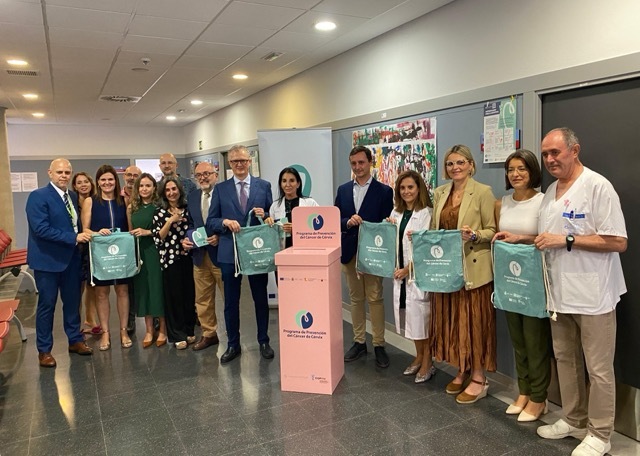Health begins to appoint women between 30 and 65 years of age for cervical cancer screening
This test will reach more than 380,000 women throughout the Region in the next five years
Screening is a key element in eliminating this type of cancer along with vaccination against human papillomavirus
16.10.2024 The Ministry of Health begins the new cervical cancer screening aimed at the female population between 30 and 65 years old. This new screening model has the ability to detect the presence of the high-risk human papillomavirus (HR-HPV), which causes this type of cancer.
The cervical screening test is an important asset in preventive medicine since it is highly effective and, together with vaccination against the human papillomavirus (HPV), constitutes a key element in the elimination of this type of cancer.
Health has begun to send this week, in a staggered manner, the invitation letter to the 3,356 women in the Murcia/Floridablanca Basic Health Zone who fall within the age range of the target population.
The Minister of Health, Juan José Pedreño, explained that “we will start the screening here to test and adapt the circuits that we have designed before the regional deployment, which will be done in a phased manner in all health areas.”
The deployment of this new cervical cancer screening model will replace the current model, the so-called ‘opportunistic’ one, which consists of recruiting women for consultation, taking advantage of their visit for any other issue.
The counselor explained that “until the new test is deployed in all health areas, opportunistic screening will continue to be carried out. In this way, women in the Region will be covered at all times by this preventive intervention.”
The target population for cervical cancer screening will cover, in the next five years, more than 380,000 women, “and new screening tests will be introduced, that is, the detection of high-risk human papillomavirus with self-sampling and cytology. liquid, within the population program,” explained Pedreño.
Thanks to this test, pre-malignant and malignant lesions in the cervix can be identified in women who do not show any symptoms, to refer them if appropriate for appropriate treatment and follow-up.
Self-take to encourage participation
“Awareness is a very important part of prevention, so we want to call on all women to actively participate in this program,” said the counselor.
The Ministry of Health issues invitations to participating women by postal mail, which includes a QR code from which audiovisual information about the program can be downloaded, as well as the list of pharmacy offices where the self-medication kit can be picked up for free.
Once the kit has been dispensed, the electronic request for HPV analysis is activated to the Microbiology laboratory of the Virgen de la Arrixaca hospital, pending receipt of the sample.
At home, and following the instructions provided at the pharmacy where she picks up the kit, the user performs the self-test, which she must subsequently deposit in the specific pink mailbox of the cervical cancer screening program at her nearest health center. (preferably the same day of the self-take). If you have difficulties taking the sample or it turns out to be invalid, a second sample can be taken with the help of the midwife at your Primary Care centre.
Once the samples have been analyzed, participants will receive a letter at their home informing them that they have tested negative for HPV or that the sample has turned out to be invalid and urging them to have it done again. If the analysis is positive, the midwife will contact the user by telephone to have a liquid cytology performed at her health center and rule out or identify a precancerous lesion in the cervix.
The cytology tests will be analyzed in the Pathological Anatomy laboratory of the Virgen de la Arrixaca hospital and, in the event of a suspected lesion, the patient could be referred to the Gynecology Service of her hospital to undergo a colposcopy.
Greater vaccine coverage in the country
Vaccine coverage with the first dose in girls and boys born in 2011 last year exceeded 91 percent, reaching 16,232 immunized people, and in the second dose it was higher than 86 percent, with 14,789 girls and boys vaccinated. The Region is, therefore, the community with the highest HPV vaccine coverage.
This vaccine began to be administered in the Region of Murcia to women born since 1994 with a bivalent vaccine, which covered against two types of viruses. In the 2022/2023 campaign, the nine-valent vaccine also began to be administered for the first time in schools and included males born in 2011.
